2025: The Dawn of Humanoid Robots - A Festive Season in Living Rooms, a Golden Era in Factories | Insights into Smart Hardware
![]() 07/08 2025
07/08 2025
![]() 535
535
Author | Smart Relativity
Over the past six months, capital markets, factories, media, and the general public have turned their focus on humanoid robots.
In China, the Year of the Snake Spring Festival Gala catapulted Unitree Robotics into overnight fame. Dressed in a red padded jacket and holding a red handkerchief, the humanoid robot "twirled" its way onto the big screens in living rooms across the nation. Since then, humanoid robots have ushered in an unprecedented "festival" of attention.
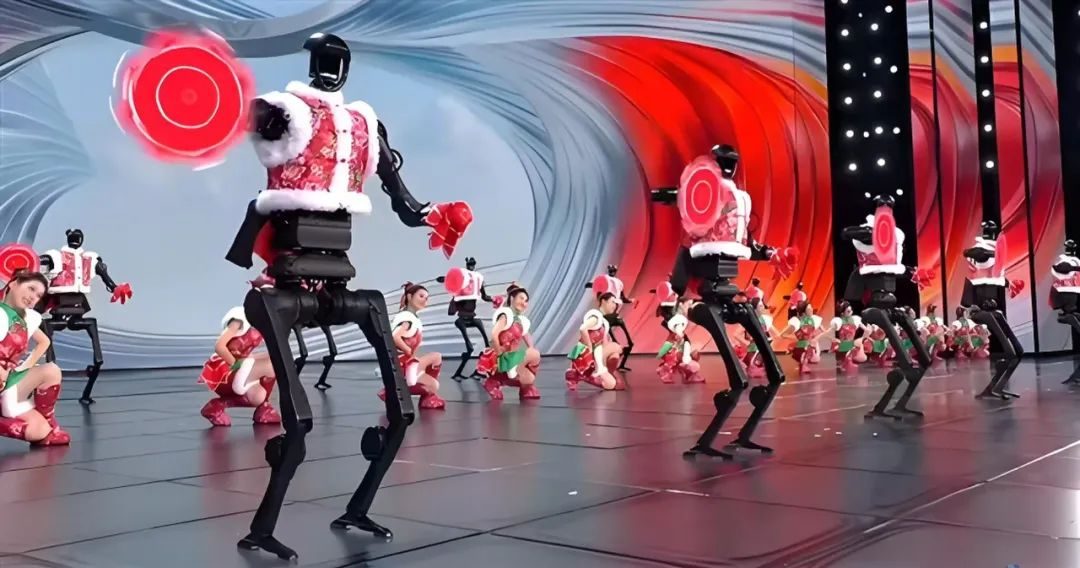
Delving deeper into the industry, humanoid robots have seen increased opportunities to make their mark in recent years. However, the true scene where the entire industry is creating "wealth" at this stage is not the living room but the factory floor. Nowadays, leading domestic and foreign enterprises such as UBTECH, Tesla, and Figure have successively introduced their humanoid robots into various factories for practical applications, and commercialization seems to have reached a critical juncture for large-scale development.
The Dual Faces of Humanoid Robots in 2025: A "Festival" in Living Rooms, a "Golden Era" in Factories
In April this year, the world's first humanoid robot half marathon was held in Beijing Yizhuang, swiftly capturing the attention of global media and audiences. Throughout the competition, controversies, hot topics, and discussions emerged incessantly. Ultimately, "Tiangong Ultra" developed by the Beijing Humanoid Robot Innovation Center, "Xiaowantong N2" by Songyan Power, and "Xingzhe II" by Shanghai Zhuoyide won the championship, runner-up, and third place, respectively.
What has such a competition brought to humanoid robots? The answer is a surge in popularity. After the competition, Songyan Power's products received high market attention, with its race-model robot "Xiaowantong N2" attracting nearly 40,000 viewers on the JD auction platform and eventually selling at a 42% premium.
Similar scenarios have repeatedly unfolded this year. Many humanoid robot startups have debuted and gained popularity on social media. Users can see different brands of humanoid robots showcasing their skills, such as dancing, running, crawling, fighting, etc., while scrolling through their phones at home, creating one festive spectacle after another.
Meanwhile, leading humanoid robot companies have turned their attention to practical applications in various factories. Elon Musk, while hyping Tesla's Optimus robot mass production plans, has also deployed the Optimus Gen3 in Tesla factories to perform tasks such as battery sorting and equipment debugging, continuously verifying the practical capabilities of humanoid robots in industrial scenarios.
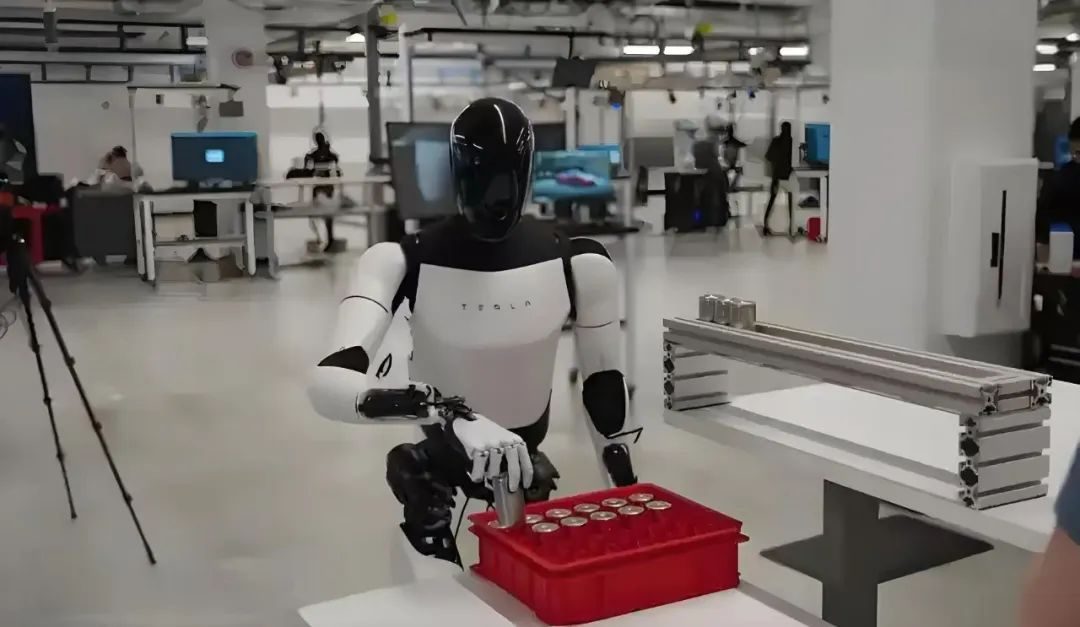
At BMW's Spartanburg factory, Figure's 02 robot has also commenced high-intensity logistics sorting operations averaging 20 hours per day, along with tasks such as body handling and quality inspection. Domestic humanoid robot leader UBTECH has conducted practical training in over ten automobile factories, including Dongfeng Liuzhou Motor and Geely Automobile, completing procedures such as seat belt inspection and body quality inspection.
This year, UBTECH launched Training 2.0, with dozens of humanoid robots conducting collaborative training within the Zeekr 5G Smart Factory. For the first time, swarm intelligence technology was introduced into humanoid robots, breaking through the single-robot task scope and expanding it to the flexible production line-level requirements of multiple robots working together.
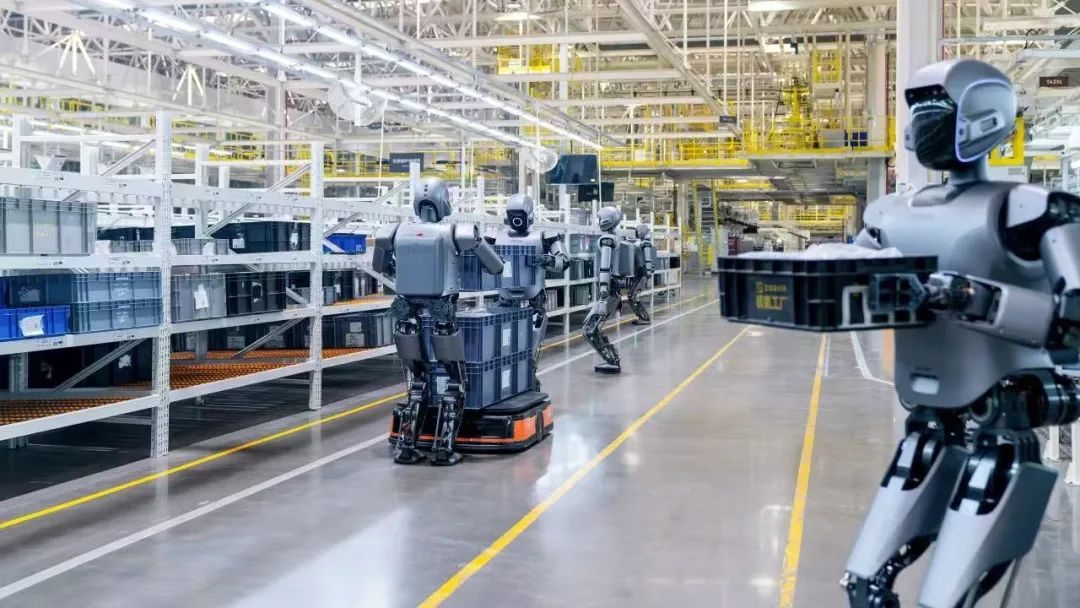
▲Dozens of UBTECH industrial humanoid robots Walker S1 collaboratively transporting large-load and large-size material bins
Why do leading humanoid robot manufacturers such as UBTECH, Tesla, and Figure attach such importance to factory training? From the perspective of "Smart Relativity," industrial scenarios are precisely the key to "gold mining" for humanoid robots moving forward.
Figure set a new industry record with a valuation of $39.5 billion, a 15-fold increase from its 2024 valuation. Behind this soaring valuation lies Figure's layout and large-scale training in industrial scenarios, as well as support for mass production plans. In March this year, Figure officially announced the completion of its BotQ mass production factory, with an annual capacity of 12,000 units on the first production line, which will be expanded to 100,000 units per year over the next four years.
In China, Yinhe General set a new industry record with a single financing round of 1.1 billion yuan, with a cumulative financing amount exceeding 2.4 billion yuan and a valuation exceeding the "unicorn" threshold. This valuation is attributed to Yinhe General's focus on actual factory operations such as industrial assembly and quality inspection.
UBTECH has taken the lead in realizing the landing application of humanoid robots, becoming the only global humanoid robot company to announce cooperation with multiple automobile companies. Its Walker S series is the industrial humanoid robot that has entered the most automobile factories for practical training worldwide. Unitree Robotics has successively won multiple industrial-grade orders, including inspection of Shenzhen hydropower stations and a humanoid robot training platform at Tongji University, with a single order amount exceeding 8 million yuan, accelerating its penetration into industrial scenarios.
Various signals indicate that the "wealth" of humanoid robots, including financing and large orders, is derived from "factories." Only by continuously entering factories, conducting industrial training, and solving various business problems in industrial scenarios can humanoid robots generate revenue at this stage.
Humanoid Robots Are Evolving in "Factories"
As more and more humanoid robots enter the industrial field, "evolution" tailored to the actual business needs of industrial scenarios is also occurring simultaneously, guiding humanoid robots to continue achieving more complex tasks in factories.
Faced with the complex, production line-level task requirements of factories, UBTECH relies on its core technology system of swarm intelligence for humanoid robots, including cross-field fusion perception, intelligent hybrid decision-making, and multi-robot collaborative control, to construct a swarm brain network technology architecture system generated by linking a "super brain" with "intelligent cerebellum." This architecture is based on the Humanoid Internet of Things (IoH), achieving coordinated scheduling of different system modules through a cross-level organic interconnection mechanism, expanding the autonomous task execution scope of a single humanoid robot to flexible manufacturing demand scenarios at the production line level, forming a hybrid intelligent system of multiple robots working together.
As a result, UBTECH has achieved swarm intelligence fusion in multi-dimensional scenarios, supporting complex task collaboration in industrial manufacturing, service scenarios, and other fields, and constructing an intelligent agent network ecology with automatic organization and optimization capabilities. This progress directly drives the involvement of humanoid robots in production lines and tasks, allowing more and more humanoid robots to enter factories in groups and cooperate with each other to handle complex tasks.
Overseas, Figure has also proposed its own technical architecture for industrial scenario training. In February this year, Figure released the new-generation Helix large model, one of the cores of which is the dual-system collaborative architecture. By innovatively adopting a hierarchical architecture of "System 1 (S1) - System 2 (S2)," it achieves a balanced collaboration between semantic generalization capabilities and high-frequency real-time control.
Specifically, S2 is responsible for "slow thinking" regarding high-level goals, while S1 is responsible for "fast thinking," executing and adjusting actions in real-time. At the same time, S1 can quickly adapt to the constantly changing actions of the humanoid robot while maintaining the semantic goals of S2. Simply put, S2 thinks at a low frequency, responsible for overall planning, while S1 moves at a high frequency, responsible for real-time operations, thus realizing a mode of division of labor and collaboration similar to UBTECH's "super brain and intelligent cerebellum."
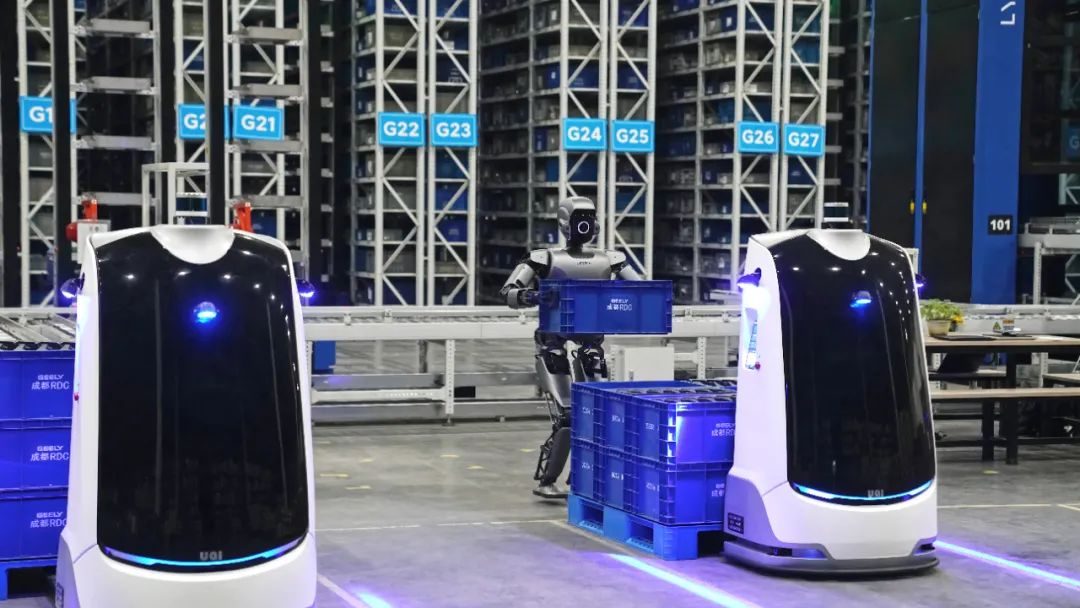
▲UBTECH industrial humanoid robot Walker S1 collaborating with Wali unmanned forklift F1200S to complete automobile parts warehousing
The Helix large model enables Figure's humanoid robots to perform tasks more closely resembling human reactions and logic. For example, in a factory, when a robot needs to carry a box, the "super brain" can disassemble the task, confirm the target, and plan the route, while the "intelligent cerebellum" is responsible for real-time execution, such as handling operations and dynamic obstacle avoidance.
Furthermore, based on the Helix large model, Figure has also enabled multi-robot collaboration, allowing two robots to share the same AI model, thereby achieving a true sense of division of labor and collaboration. According to the demonstration video released by Figure, two Figure 02 robots can already work together, with one responsible for holding the container and the other for picking up items, cooperating to sort items.
From Figure to UBTECH, these advancements in technology and capabilities continue to drive the evolution of humanoid robots from "machines" to "humans," working, thinking, and cooperating like humans. This will also continue to deepen the "gold mining" capabilities of humanoid robots in industrial scenarios.
Industrial Capital Can't Wait to Invest in Humanoid Robots in Factories
These series of signals are benefiting the development of humanoid robots. Faced with such a hot field and its explosive potential in the industrial end, industrial capital is massively accelerating its influx into the field of humanoid robots. In fact, since its listing on the Hong Kong Stock Exchange in December 2023, as the "first humanoid robot stock" globally, UBTECH has directly driven the industry's high attention to humanoid robots, benefiting latercomers to varying degrees.
In the first half of this year, capital influx in the field of humanoid robots was even hotter, akin to a "gold rush." Among them, domestic and foreign financing accounted for half each, with domestic companies such as Yinhe General, Unitree Robotics, and Autonomous Variable Robots dominating, attracting more than 60% of the financing amount, while foreign companies such as Figure and Apptronik led in valuation surges.
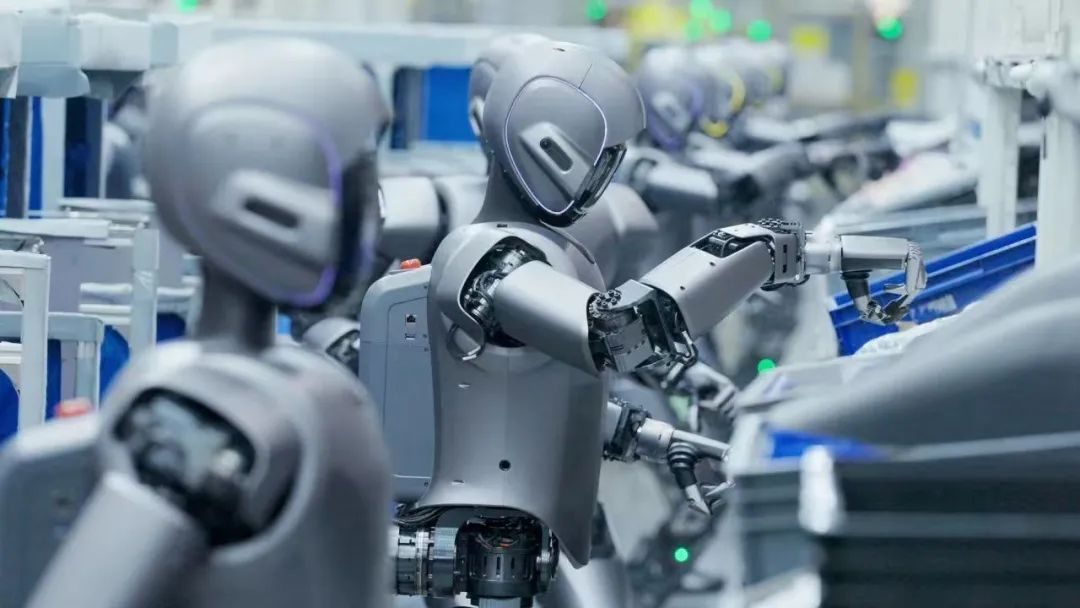
▲UBTECH humanoid robots' "swarm intelligence" conducting collaborative training in the Zeekr 5G Smart Factory
Behind the capital frenzy, there are almost always the figures of industry giants, both domestically and internationally. For example, Unitree Robotics' investors include China Mobile, Tencent, Alibaba, Ant Group, Geely, etc., while Figure's investors include Microsoft, NVIDIA, Amazon, etc. These industrial capitals have not only brought money to humanoid robots but also various industrial-grade resources that the industry development urgently needs, such as technology, data, supply chain management, and practical scenarios tailored to industrial scenarios.
For instance, through a strategic investment of 1.1 billion yuan, CATL deeply embedded its 4680 battery technology and BMS management system into Yinhe General's humanoid robots, increasing endurance from the traditional 4 hours to 8 hours, while simultaneously addressing the heat dissipation pain point of high-intensity robot operations through thermal management technology.
Microsoft led Figure's B+ round of financing with $500 million, simultaneously opening up Azure AI infrastructure and multimodal large models (such as Claude 3.5) to help the Figure-02 robot achieve an end-to-end closed loop of "natural language instruction - motion planning - execution control," improving its semantic understanding accuracy to 92%, thereby better executing industrial instructions.
Similar capital-industry collaborations are constantly emerging in the field of humanoid robots, such as Tencent AI Lab providing motion planning algorithms for Unitree's H1 robot and Google DeepMind opening up its reinforcement learning platform D4RL to Apptronik.
As humanoid robots receive high attention from the entire society, it signifies that the industry's development has officially crossed the days of going it alone and entered the stage of industrial collaboration. Whether it is the services provided by humanoid robots or the industry in which they are located, collaboration will be the keyword for future development.
Learning to collaborate in groups is also a feature of human evolutionary civilization. Humanoid robots may be no exception.
*All images in this article are sourced from the internet








